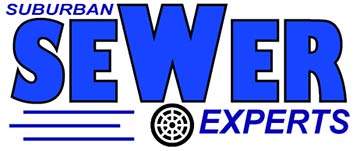
Plungers are the most common household tool for clearing clogged drains. Growing up, most of us had one in the house, even though, as kids, we didn’t know what it was for. But today, as an adult, you may own a couple of them; one for your kitchen sink and another for your toilet.
What makes plumbers so popular is that they are cheap and yet so effective. Without using electricity or making any fuss, a plunger quietly does its work. IIP Management notes that this is one of the main reasons why their design has not changed significantly since the first plunger was invented in the 1870s.
So even in the 21st century, when a toilet clogs, you know you can reach for this trusty ancient tool to fix the problem with a few minutes of vigorous pushing. Most times, this is all you need to get your toilet or kitchen sink working again. But not all the time, though.
There are those times when a plunger just isn’t able to clear the blockage in your drain. Why does that happen?
Plungers are most effective for clogs that are caused by hair, soap scum, or food waste. Your plunger may struggle with a clog if it is caused by other types of materials.
Sometimes the clog is too deep inside the pipe for the plunger to dislodge it. Plungers are most effective when a clog is located near the drain opening.
If your plunging technique is wrong, the plunger will not work. To successfully clear a clog using a plunger, create a perfect seal directly above the hole and push fast and hard.
What are your alternatives if your plunging technique is correct but you still can’t clear the item blocking your drain?
What to do if your plunger doesn’t work
- Use a different type of plunger
If a clog is in your toilet drain and you’re using a cup plunger, it probably won’t work. Flange plungers and accordion plungers are specifically designed for use with toilets. Flange plungers have a flap that lets them fit snugly into the drain to provide a perfect seal and allow for maximum suction. Accordion plungers are also very effective, but they require more skill to use.
- Use a wire hanger
This is for clogs that are caused by hair and small pieces of fabric, especially in the sink or shower drain. To use this method, get a wire hanger, straighten it, and leave a small hook at the end. Insert the hooked end into the clogged drain until it reaches the blocked section. Twist the wire to let it hook the blockage. Pull out the wire and flush the drain with water.
- Use a closet auger or drain snake
These small, handheld tools can be purchased from your local hardware store for a few dollars. They will remove toilet clogs that are out of the reach of your plunger. To clear the blocked drain, insert the snake into the blocked toilet and twist the handle to help the snake hook or break up the clog. Flush the toilet while the drain is still inside it.
Professional drain-cleaning options
If, after using these methods, your drain is still clogged, then it is time to talk to a professional plumber. To unclog the drain, your plumber will use one or both of these two drain-cleaning methods: hydro jetting and sewer rodding.
- Sewer rodding
Sewer rodding uses a long, flexible rod that is able to go deep into your drainpipes to dislodge any blockages inside the line. Some sewer rodding methods use a series of 3-foot flexible rods that are screwed together to extend their reach into the drain line. Another method uses a flexible stainless steel cable with an attached cutting head and a motor that spins the cutting head to remove the worst kinds of blockages from your pipes.
- Hydro jetting
This method uses high-pressure water to clear blockages from your drainage system. A flexible high-pressure water hose with a stainless nozzle at its end is inserted into the drainpipe, while the other end is connected to a pressure machine and water tank. Water is released into the pipes with enough pressure force to remove lime-scale, sludge, grease, and even tree roots, while also washing the pipes clean.
- Sewer camera inspection
To determine the correct method for cleaning your drains, the plumber will conduct a sewer camera inspection to determine the type of clog and the condition of your pipes. This involves inserting a waterproof camera into the drains to obtain a real-time video of the pipe channel. Sewer camera cameras ensure the effectiveness of professional drain-cleaning.
If your drain is clogged and you are unable to unclog it with a plunger or other DIY methods, please talk to a plumber at once. Stubborn drain clogs in your home may be a sign of more serious issues in the plumbing. Overlooking them can lead to a sewer backup in your house.

